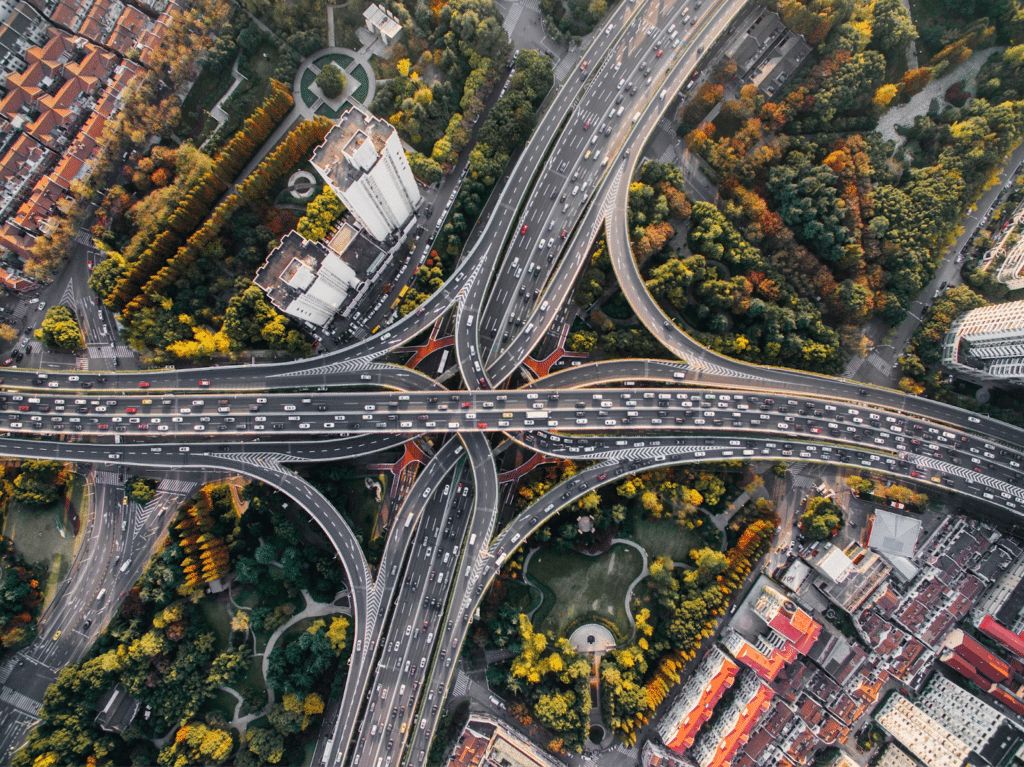Going from point A to point B makes it unpredictable to know exactly what time you’ll arrive because of traffic. A 30-minute ride can suddenly become an hour or so because of the influx of vehicles, pedestrians, and other road circumstances. And now that 55% of the world’s population lives in urban zones, with a projected increase of 13% by 2050, efficient traffic systems are needed.
As cities become congested by the day, innovation beyond the norm is worth exploring. This is where a smart traffic management system comes in. This article will discuss what it is and how it functions. Continue reading to learn more.
What is a Smart Traffic Management System?
A smart traffic management system is a high-tech solution that uses fancy sensors, communication networks, and clever algorithms to keep an eye on traffic in real time. Unlike old-school systems that follow set schedules or need human help, these smart systems can adapt on the fly. They analyze traffic data to make quick decisions like changing traffic light timings to keep things moving smoothly and reduce jams.
One of the key components of smart traffic management systems is the Internet of Things (IOT). By integrating a network of interconnected devices, sensors, and communication technologies, IOT traffic management systems can collect and analyze real-time data from various sources, enabling more informed and proactive decision-making.
How Smart Traffic Management Systems Work
Smart traffic management systems are well-organized operations set in place to garner needed information happening on the road in real time. The following is an overview of how smart traffic management systems work:
Data Collection
Strategically placed sensors, cameras, and other devices capture information about traffic flow, congestion levels, vehicle density, and environmental conditions. Additionally, data can be sourced from GPS devices, mobile applications, and even social media platforms, providing a holistic view of the transportation landscape.

Data Analysis
The collected data is processed and analyzed using advanced algorithms and machine learning techniques. These systems can identify patterns, predict potential bottlenecks, and generate insights that inform decision-making processes. By continuously monitoring and analyzing data in real-time, smart traffic management systems can adapt to changing circumstances and make proactive adjustments.
Traffic Optimization
With data-driven insights, smart traffic management systems can implement various optimization strategies to reduce traffic congestion. These may include:
Intelligent Signal Control
Traffic signals can be dynamically adjusted based on real-time traffic conditions, allowing for more efficient flow and reducing wait times at intersections.
Route Guidance
By analyzing current traffic patterns and identifying alternative routes, smart systems can provide real-time route guidance to drivers, helping to distribute traffic more evenly across the road network.
Incident Management
In the event of accidents, road closures, or other incidents, smart systems can quickly detect and respond, rerouting traffic and minimizing the impact on overall mobility.
Parking Management
Smart parking systems can guide drivers to available parking spaces, reducing the time spent searching for spots and contributing to reduced congestion.
The role of smart traffic management systems is crucial because they make road navigation simpler and safer. Capitalizing on the services they provide will enable you to travel much faster.
Challenges and Considerations
While smart traffic management systems offer numerous benefits, their implementation and operation present several challenges that must be addressed:
Data Privacy and Security
With the collection and processing of vast amounts of data, including potentially sensitive information, ensuring data privacy and security is paramount.
Interoperability and Standardization
Different smart traffic management systems and components need to be interoperable and adhere to common standards to ensure seamless integration and data exchange.
Infrastructure Investment
Deploying smart traffic management systems requires significant infrastructure investment, including installing sensors, communication networks, and data processing systems.
Public Acceptance and Trust
Gaining public acceptance and trust in the use of these technologies is crucial for their successful implementation and adoption.
Scalability and Adaptability
As cities grow and transportation needs evolve, smart traffic management systems must be scalable and adaptable to accommodate changing requirements.
Despite these challenges, the potential benefits of smart traffic management systems such as reduced congestion, improved air quality, and enhanced safety make them an increasingly attractive solution for cities worldwide. As technology continues to advance and more cities embrace smart city initiatives, the adoption of intelligent traffic management systems is poised to play a pivotal role in shaping the future of urban mobility.
Final Remarks
Smart traffic management systems represent a paradigm shift in how people approach urban mobility and traffic management. The implementation of smart traffic management systems has the potential to transform cities, reducing traffic jams, improving air quality, enhancing safety, and boosting economic productivity. By harnessing the power of advanced technologies, real-time data analysis, and intelligent decision-making, these systems offer a comprehensive solution to the challenges posed by increasing urbanization and congestion.
‘68% of the world population projected to live in urban areas by 2050, says UN68% of the world population projected to live in urban areas by 2050, says UN.’
Source: https://www.un.org/uk/desa/68-world-population-projected-live-urban-areas-2050-says-un
Published by: Martin De Juan

















